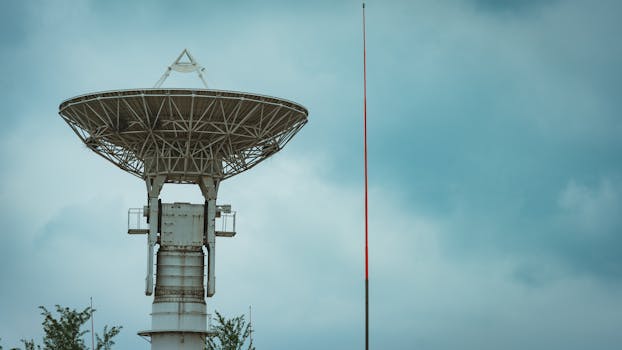The Future of Satellites: Revolutionizing Global Connectivity
The future of satellites is poised to revolutionize global connectivity, enabling faster and more reliable communication networks. With advancements in space technology, satellites are becoming increasingly important for various industries, including telecommunications, navigation, and weather forecasting.

The future of satellites is a topic of great interest and importance, as these space-based systems are poised to revolutionize global connectivity. With the increasing demand for faster and more reliable communication networks, satellites are becoming a crucial component of modern telecommunications infrastructure. Future of satellites is the key to unlocking the full potential of space technology, and it is expected to have a significant impact on various industries, including telecommunications, navigation, and weather forecasting.
One of the most significant advancements in satellite technology is the development of small satellites, also known as smallsats. These satellites are smaller, lighter, and less expensive than traditional satellites, making them more accessible to a wider range of organizations and countries. Smallsats are being used for a variety of applications, including Earth observation, communication, and navigation. They are also being used to provide internet connectivity to remote and underserved communities, helping to bridge the digital divide and promote economic development.
Another area of significant advancement in satellite technology is the development of satellite constellations. These constellations consist of multiple satellites working together to provide global coverage and enable real-time communication. Satellite constellations are being used to provide a range of services, including broadband internet, navigation, and weather forecasting. They are also being used to support the development of emerging technologies, such as autonomous vehicles and smart cities.
Advancements in Satellite Technology
There have been several recent advancements in satellite technology that are helping to shape the future of satellites. One of the most significant advancements is the development of new propulsion systems, such as electric propulsion and advanced ion engines. These propulsion systems are more efficient and powerful than traditional propulsion systems, enabling satellites to travel farther and faster than ever before.
Another area of advancement is the development of new materials and manufacturing techniques. These advancements are enabling the creation of lighter, stronger, and more durable satellites that can withstand the harsh conditions of space. They are also enabling the development of new types of satellites, such as inflatable satellites and satellites with flexible solar panels.
The use of artificial intelligence and machine learning is also becoming more prevalent in satellite technology. These technologies are being used to improve the performance and efficiency of satellites, as well as to enable new applications and services. For example, AI and machine learning are being used to improve the accuracy of weather forecasting and to enable the development of autonomous satellites that can operate independently.
Applications of Satellites
Satellites have a wide range of applications, including telecommunications, navigation, weather forecasting, and Earth observation. They are also being used to support the development of emerging technologies, such as autonomous vehicles and smart cities. In addition, satellites are being used to provide critical services, such as search and rescue and disaster response.
The use of satellites is also becoming more prevalent in the field of agriculture. Satellites are being used to monitor crop health, track soil moisture, and predict weather patterns. This information is being used to improve crop yields, reduce waste, and promote sustainable agriculture practices.
Satellites are also being used to support the development of new industries, such as space tourism and space mining. These industries are expected to create new opportunities for economic growth and development, as well as to promote further advancements in space technology.
Challenges and Opportunities
Despite the many advancements and applications of satellites, there are also several challenges and opportunities that must be addressed. One of the most significant challenges is the issue of space debris. As the number of satellites in orbit increases, so does the risk of collisions and the creation of new debris. This debris can pose a significant threat to the safety and operation of satellites, as well as to the environment.
Another challenge is the issue of regulatory frameworks. As the use of satellites becomes more widespread, there is a need for clear and consistent regulatory frameworks to govern their use. This includes issues such as licensing, spectrum allocation, and liability.
Despite these challenges, the future of satellites is full of opportunities. The development of new technologies and applications is expected to create new industries and job opportunities, as well as to promote further advancements in space technology. The use of satellites is also expected to have a significant impact on the environment, by enabling the monitoring and mitigation of climate change, and by promoting sustainable development practices.
In conclusion, the future of satellites is a topic of great interest and importance. With advancements in space technology, satellites are becoming increasingly important for various industries, including telecommunications, navigation, and weather forecasting. As the use of satellites continues to grow and evolve, it is expected to have a significant impact on the environment, the economy, and society as a whole.




